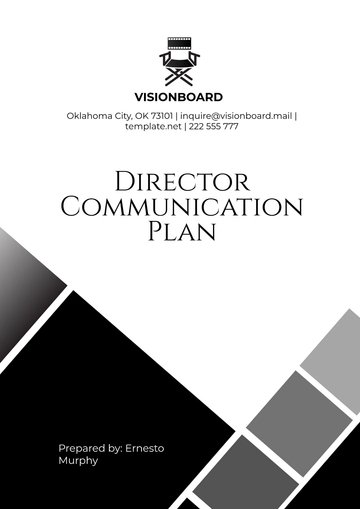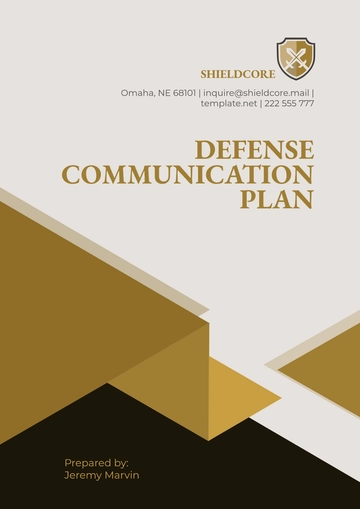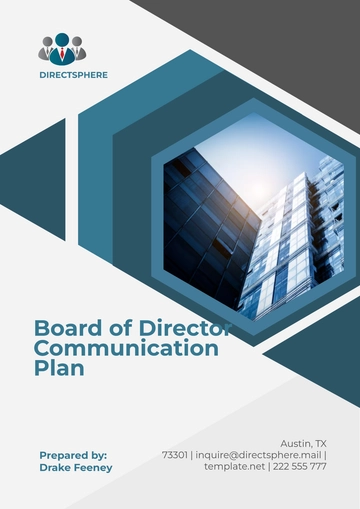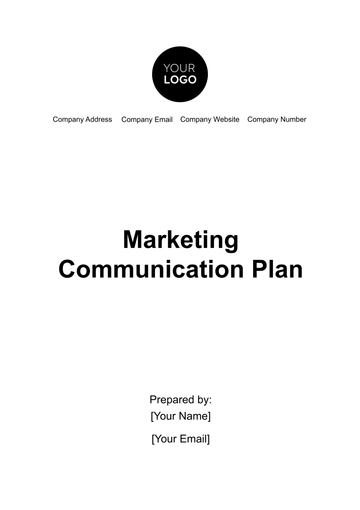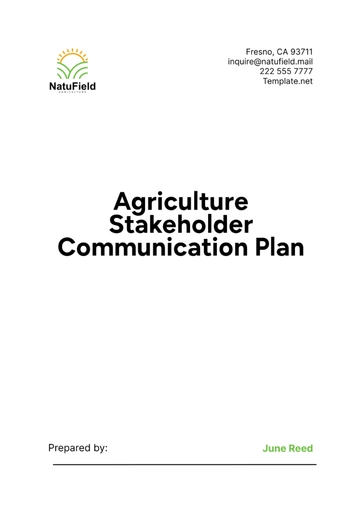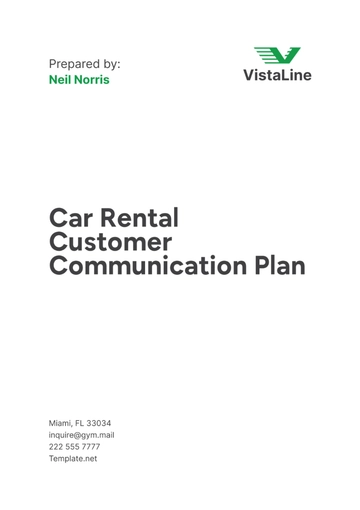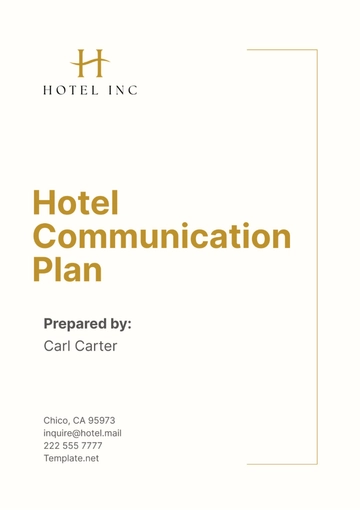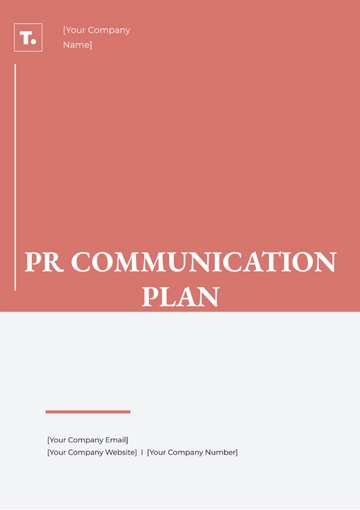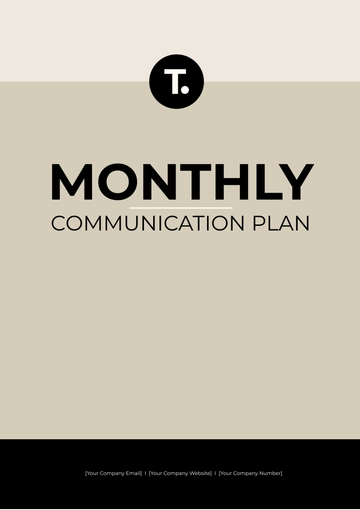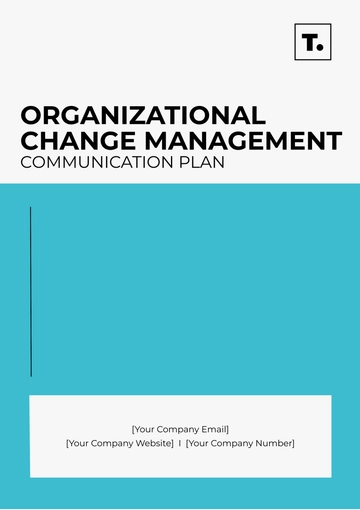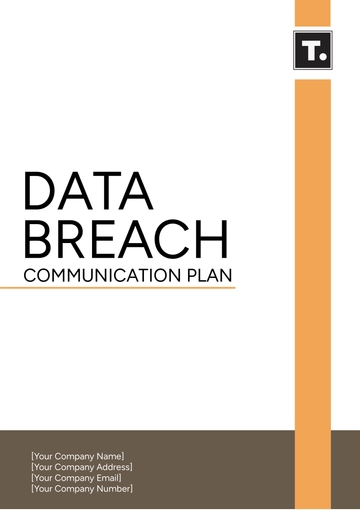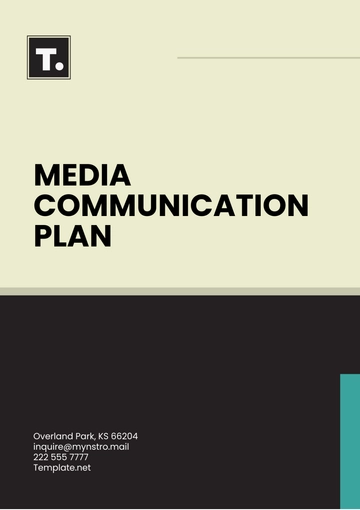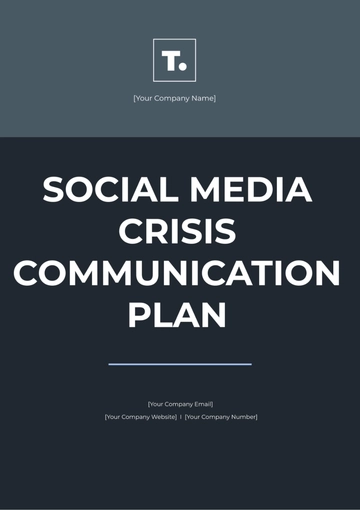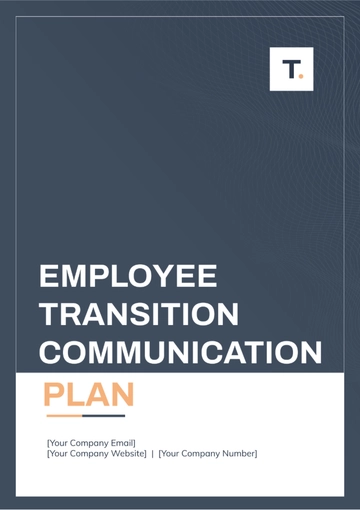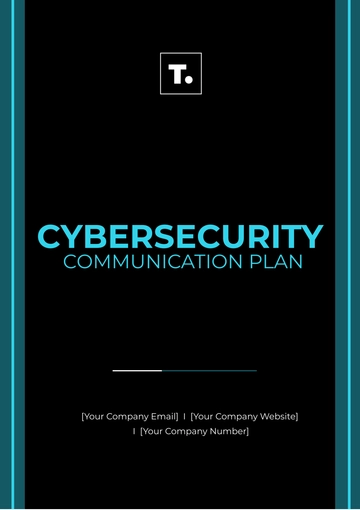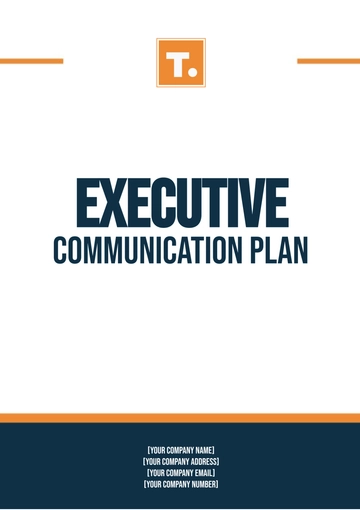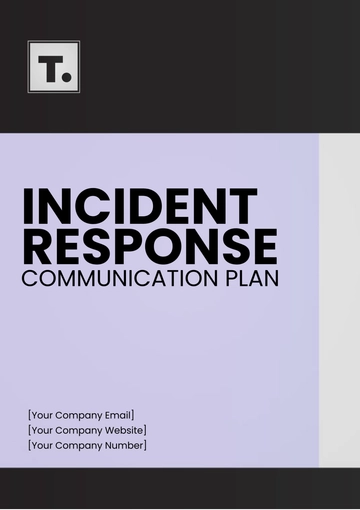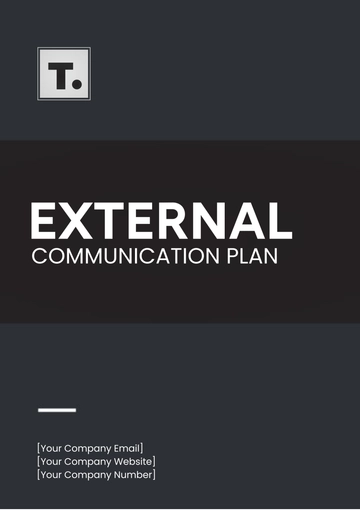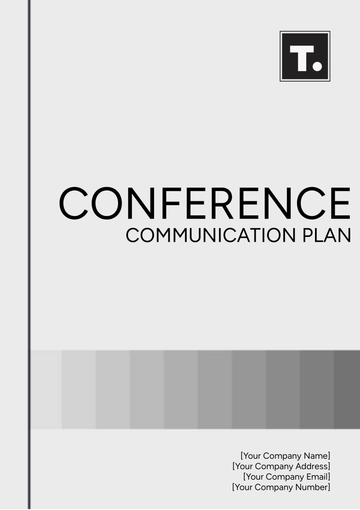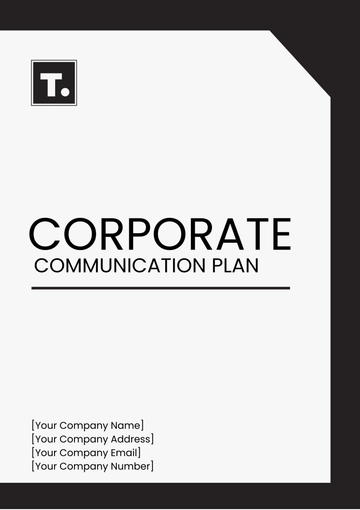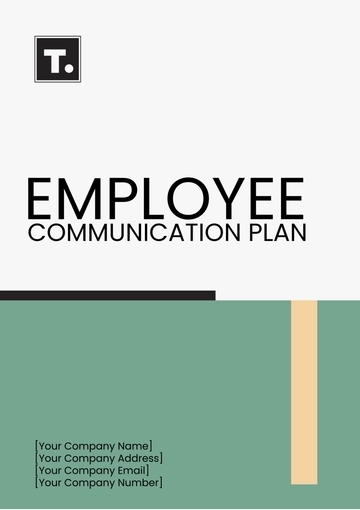Free Comprehensive Health & Safety Communication Plan
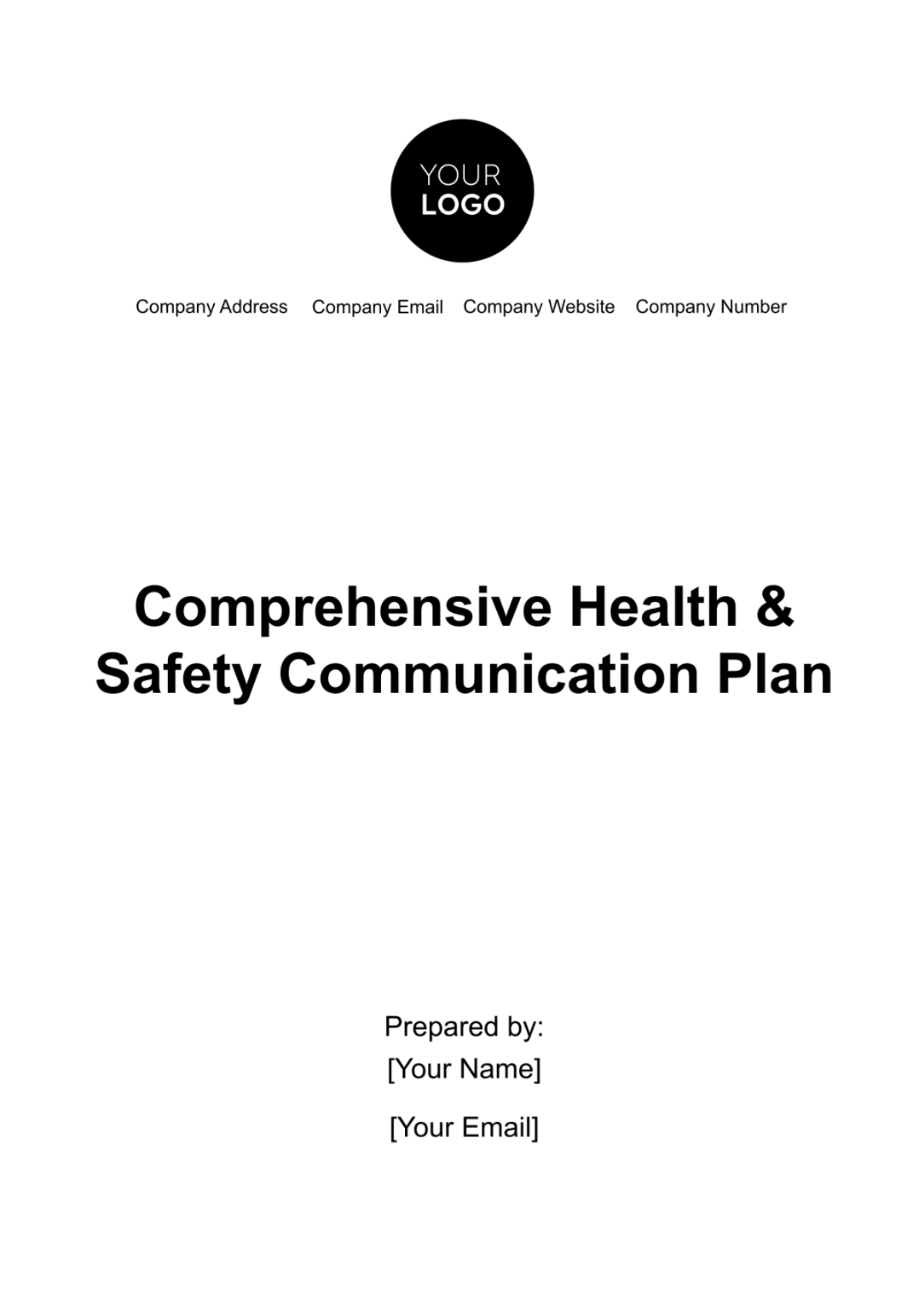
I. Introduction
A. Purpose
The purpose of this plan is to establish a robust framework that ensures effective communication of critical health and safety information. It is crafted with the intent of fostering a proactive and informed workplace culture, prioritizing the well-being of our employees and stakeholders.
B. Scope
This plan encompasses a wide spectrum of health and safety communication aspects. It extends to cover updates on regulatory requirements, information dissemination related to monitoring activities, communication about training initiatives, and clear protocols for emergency response communication. It applies to all individuals associated with our operations, including employees, contractors, suppliers, and relevant external stakeholders.
C. Objectives
Regulatory Compliance Updates
Provide timely and accurate updates on changes in health and safety regulations, ensuring that all stakeholders are informed and our organization remains compliant.
Transparent Monitoring Communication
Communicate the purpose and findings of health and safety monitoring activities transparently, enhancing understanding and accountability across the organization.
Effective Training Communication
Announce and reinforce the importance of training initiatives, ensuring that employees are well-informed and engaged in continuous learning to enhance safety practices.
II. Target Audiences
A. Internal Stakeholders
Employees at All Levels
Ensure that every employee, from the frontline to leadership, is informed and engaged in health and safety matters.
Management and Leadership Teams
Provide comprehensive information to guide decision-making at the managerial and leadership levels.
Safety Committees and Representatives
Facilitate clear communication channels for safety committees and representatives to relay information within their respective areas.
B. External Stakeholders
Contractors and Subcontractors
Extend communication efforts to include external entities engaged in our operations.
Suppliers and Vendors
Ensure that suppliers and vendors are aware of our health and safety expectations and protocols.
Regulatory Authorities
Establish effective communication channels with relevant regulatory bodies to facilitate compliance and reporting.
III. Communication Channels
A. Internal Channels
Company-wide Emails
Regularly disseminate important health and safety updates through concise and informative company-wide email communications.
Intranet Platforms
Utilize our intranet platforms to host detailed documents, policies, and procedures related to health and safety, promoting accessibility and a centralized source of information.
Team Meetings and Briefings
Incorporate health and safety discussions into routine team meetings and briefings to foster real-time engagement and address specific concerns.
B. External Channels
Dedicated Contact Points
Designate specific contact points for external stakeholders, ensuring a direct and efficient line of communication for inquiries, feedback, and collaboration.
Industry Forums and Associations
Actively participate in relevant industry forums and associations to share best practices, exchange insights, and contribute to collective efforts in enhancing health and safety standards.
Regulatory Authority Portals
Utilize official portals and communication channels provided by regulatory authorities for compliance-related updates, ensuring alignment with external regulatory expectations.
C. Multimedia Platforms
Video Messages
Incorporate video messages from leadership to communicate key health and safety messages, enhancing engagement through visual storytelling.
Interactive Webinars
Conduct interactive webinars on health and safety topics, allowing for real-time Q&A sessions and fostering a culture of continuous learning.
D. Mobile Applications
Health and Safety App
Develop a mobile application dedicated to health and safety communication, providing users with instant access to important updates, resources, and emergency information.
Push Notifications
Utilize push notifications within the app to alert users about urgent health and safety matters, ensuring timely dissemination of critical information.
E. Social Media Platforms
Social Media Updates
Leverage social media platforms to share bite-sized health and safety updates, reaching a broader audience and encouraging social sharing.
Live Chats
Host live chat sessions on social media platforms, allowing employees to ask questions and receive real-time responses from health and safety experts.
IV. Communication Schedule
A. Regular Updates
Provide monthly regulatory updates to keep stakeholders abreast of changes in health and safety regulations, fostering a culture of continuous awareness.
B. Quarterly Monitoring Activity Reports
Share comprehensive reports on monitoring activities quarterly, outlining key findings, actions taken, and areas identified for improvement.
C. Annual Communication Strategy Review
Annual Strategy Review
Conduct an annual review of the overall health and safety communication strategy, ensuring alignment with organizational goals and evolving regulatory requirements.
Strategy Enhancement
Document recommendations for enhancing the communication strategy based on lessons learned, emerging trends, and stakeholder feedback.
V. Feedback Mechanisms
A. Surveys and Feedback Forms
Implement regular surveys to assess stakeholders' understanding and satisfaction with health and safety communication, utilizing anonymous feedback forms for sensitive topics.
B. Continuous Improvement Discussions
Encourage open discussions on communication effectiveness during team meetings and safety committees, fostering a culture of continuous improvement.
C. Responsive Communication Channels
Establish responsive communication channels, promptly addressing stakeholder queries and concerns related to health and safety, ensuring transparency and trust.
VI. Document Control
A. Version Control
Clearly label all health and safety communication documents, including version numbers and dates, for easy identification.
Implement a revision tracking system, detailing changes made, their nature, and the individuals responsible for those changes.
B. Distribution Protocols
Develop and disseminate a standardized protocol outlining the step-by-step process for distributing health and safety communication documents across various channels.
Institute access controls to ensure that only authorized individuals have access to confidential communication materials.
C. Archiving Procedures
Establish and communicate secure archiving procedures for historical health and safety documents, allowing for accessibility while maintaining confidentiality.
Conduct regular reviews of archived documents, updating them as needed to align with current regulations and organizational requirements.
VII. Performance Review
A. Regular Review Meetings
Schedule routine performance review meetings to evaluate the effectiveness of health and safety communication channels.
Document key findings from review meetings, using the insights to inform adjustments to the communication plan for enhanced effectiveness.
B. Stakeholder Feedback Integration
Actively integrate feedback from stakeholders, obtained through surveys, feedback forms, and discussions, into the communication plan to address specific concerns and enhance overall satisfaction.
Develop and implement continuous improvement plans based on performance reviews, with a focus on optimizing communication strategies, channels, and content.
VIII. Budget
The table below provides an estimated budget for essential aspects of the communication plan:
Budget Category | Estimated Costs |
Technology and Software | $15,000 |
In order to execute the budget effectively, it is imperative to allocate resources strategically. It is vital for ensuring that financial resources are aligned with organizational goals. It establishes a clear roadmap for resource utilization, enabling the organization to navigate challenges, promote compliance, and sustain a culture of safety and communication excellence.
IX. Training Communication
A. Training Session Announcements
Disseminate clear and informative announcements regarding upcoming health and safety training sessions through company-wide communication channels.
Utilize multiple communication platforms, such as emails, intranet, and notice boards, to ensure broad visibility and participation.
B. Training Materials Distribution
Develop a systematic approach for distributing training materials, ensuring all employees have access to relevant documents and resources.
Implement user-friendly digital platforms for distributing and accessing training materials, promoting ease of use and engagement.
X. Emergency Response Communication
A. Emergency Protocols Communication
Regularly communicate and reinforce emergency response protocols through various channels, emphasizing clarity and accessibility.
Conduct routine drills and simulations, accompanied by clear communication, to ensure all employees are well-versed in emergency procedures.
B. Emergency Contact Information
Disseminate up-to-date emergency contact information through company-wide channels, ensuring employees have quick access to crucial contacts.
Establish a centralized system for emergency communication, facilitating swift and effective response during critical situations.
XI. External Communication
A. Industry Participation
Actively participate in relevant industry forums and associations, disseminating and gathering health and safety insights.
Share best practices and contribute to collective efforts to enhance health and safety standards within the industry.
B. Regulatory Compliance Updates
Communicate changes in health and safety regulations promptly to external stakeholders, demonstrating transparency and adherence to compliance.
Utilize official channels and platforms provided by regulatory authorities for efficient communication of compliance-related updates.
C. Collaboration with Regulatory Bodies
Advisory Board Participation
Actively participate in health and safety advisory boards formed by regulatory bodies, providing valuable input and staying directly involved in shaping industry standards.
Preemptive Communication of Changes
Proactively communicate anticipated changes in health and safety regulations before they come into effect, demonstrating a commitment to forward-thinking compliance practices.
XII. Conclusion
This plan lays the groundwork for a robust and proactive communication strategy. From clear training announcements to effective emergency response communication and external engagement, this plan reflects our commitment to fostering a safety-conscious workplace. The inclusion of feedback mechanisms and performance reviews ensures that our communication efforts remain agile and responsive. As we move forward, this plan serves not only as a guideline but as a dynamic tool for sustaining a culture of health and safety, where communication is at the forefront of our organizational priorities.
- 100% Customizable, free editor
- Access 1 Million+ Templates, photo’s & graphics
- Download or share as a template
- Click and replace photos, graphics, text, backgrounds
- Resize, crop, AI write & more
- Access advanced editor
Elevate your workplace safety standards with the Comprehensive Health & Safety Communication Plan Template from Template.net. This editable and customizable template, equipped with the intuitive Ai Editor Tool, streamlines the creation of robust safety communication strategies. Safeguard your team and comply with regulations effortlessly with Template.net's innovative solutions.
